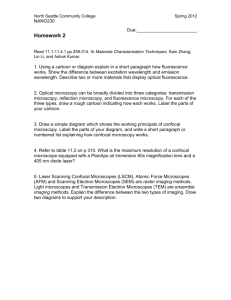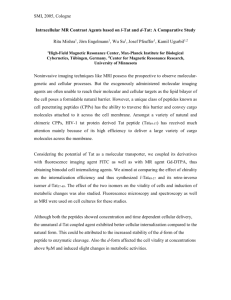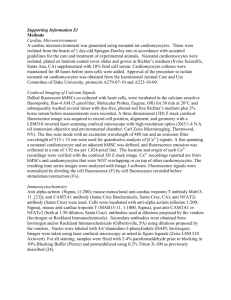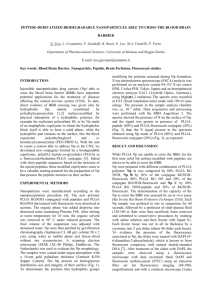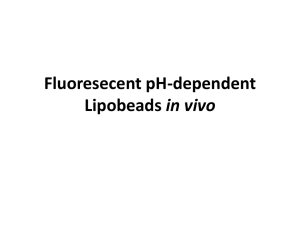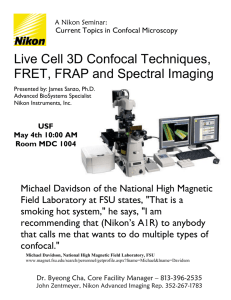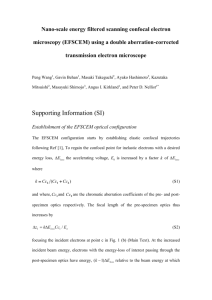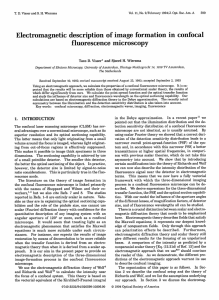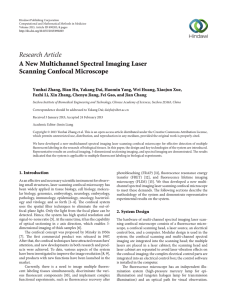In vivo confocal fluorescence imaging of skin surface cellular
advertisement
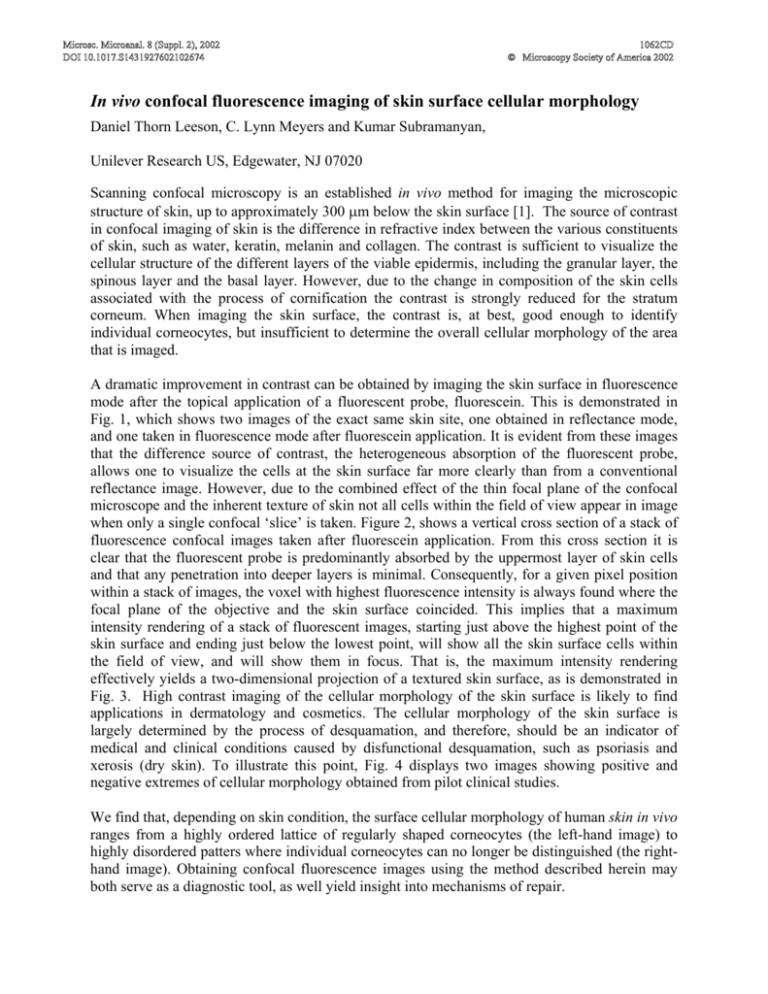
Microsc. Microanal. 8 (Suppl. 2), 2002 DOI 10.1017.S1431927602102674 1062CD Microscopy Society of America 2002 In vivo confocal fluorescence imaging of skin surface cellular morphology Daniel Thorn Leeson, C. Lynn Meyers and Kumar Subramanyan, Unilever Research US, Edgewater, NJ 07020 Scanning confocal microscopy is an established in vivo method for imaging the microscopic structure of skin, up to approximately 300 µm below the skin surface [1]. The source of contrast in confocal imaging of skin is the difference in refractive index between the various constituents of skin, such as water, keratin, melanin and collagen. The contrast is sufficient to visualize the cellular structure of the different layers of the viable epidermis, including the granular layer, the spinous layer and the basal layer. However, due to the change in composition of the skin cells associated with the process of cornification the contrast is strongly reduced for the stratum corneum. When imaging the skin surface, the contrast is, at best, good enough to identify individual corneocytes, but insufficient to determine the overall cellular morphology of the area that is imaged. A dramatic improvement in contrast can be obtained by imaging the skin surface in fluorescence mode after the topical application of a fluorescent probe, fluorescein. This is demonstrated in Fig. 1, which shows two images of the exact same skin site, one obtained in reflectance mode, and one taken in fluorescence mode after fluorescein application. It is evident from these images that the difference source of contrast, the heterogeneous absorption of the fluorescent probe, allows one to visualize the cells at the skin surface far more clearly than from a conventional reflectance image. However, due to the combined effect of the thin focal plane of the confocal microscope and the inherent texture of skin not all cells within the field of view appear in image when only a single confocal ‘slice’ is taken. Figure 2, shows a vertical cross section of a stack of fluorescence confocal images taken after fluorescein application. From this cross section it is clear that the fluorescent probe is predominantly absorbed by the uppermost layer of skin cells and that any penetration into deeper layers is minimal. Consequently, for a given pixel position within a stack of images, the voxel with highest fluorescence intensity is always found where the focal plane of the objective and the skin surface coincided. This implies that a maximum intensity rendering of a stack of fluorescent images, starting just above the highest point of the skin surface and ending just below the lowest point, will show all the skin surface cells within the field of view, and will show them in focus. That is, the maximum intensity rendering effectively yields a two-dimensional projection of a textured skin surface, as is demonstrated in Fig. 3. High contrast imaging of the cellular morphology of the skin surface is likely to find applications in dermatology and cosmetics. The cellular morphology of the skin surface is largely determined by the process of desquamation, and therefore, should be an indicator of medical and clinical conditions caused by disfunctional desquamation, such as psoriasis and xerosis (dry skin). To illustrate this point, Fig. 4 displays two images showing positive and negative extremes of cellular morphology obtained from pilot clinical studies. We find that, depending on skin condition, the surface cellular morphology of human skin in vivo ranges from a highly ordered lattice of regularly shaped corneocytes (the left-hand image) to highly disordered patters where individual corneocytes can no longer be distinguished (the righthand image). Obtaining confocal fluorescence images using the method described herein may both serve as a diagnostic tool, as well yield insight into mechanisms of repair. 1063CD [1] M. Rajadhyaksha et al. J. Invest. Dermatol. 113 (1999) 293. Fig. 1 Two images of the exact same skin site. The image on the left was taken in reflectance mode. The image on the right was taken in fluorescence mode after topical application of fluorescein. The field of view in both images is approximately 250x250 :m. Fig. 2 A vertical cross section through a stack of fluorescence confocal images taken after fluorescein application. Note that any fluorescence intensity observed below the skin surface is due to the finite width of the confocal response function rather than penetration of the probe into deeper cell layers. Fig. 3 Left-hand side: A single confocal image from the stack of images the cross section shown in Fig. 2 was taken from. Right hand side: The maximum intensity rendering of the same stack of images. Fig. 4 Examples from pilot clinical studies of healthy (lefthand image) and unhealthy (right-hand image) surface cellular morphology.
